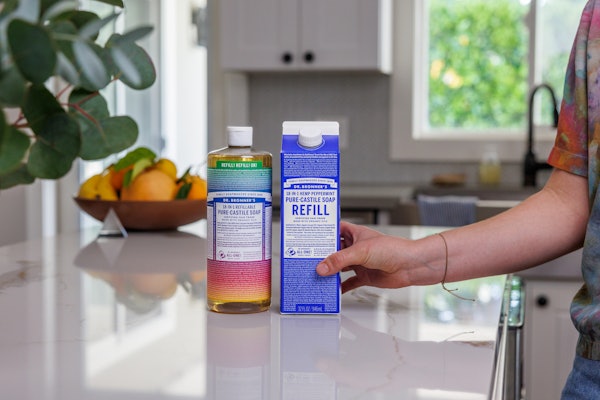
We asked consultant Sterling Anthony
to analyze a recent news item, wherein Frito-Lay parent PepsiCo
purchased "carbon offets" through the Green-e program that were
promoted via a logo used on SunChips snack bags (see SunChips packs boast Green-e logo).
SunChips became one of the first national consumer packaged goods
brands to include the Green-e logo on its packaging. In theory, the
program permits companies to offset the energy used to produce its
products by investing in renewable resources through programs like
Green-e's third-party certification program.
Here are Anthony's responses and recommendations for other packagers
considering similar on-package promotions of "green" marketing.
PW: How helpful are programs like Green-e, especially when promoted on-package?
Anthony: It depends on the consumer’s knowledge, attitude, and belief.
The consumer has to know what the Green-e logo is, have the attitude
that the underlying issue is important enough to impact the purchase
decision, and believe that the logo truthfully reflects the claimed
commitment.
Presently, the "Green Movement" does not have a consumer-directed
symbol that is the equivalent, of say, Underwriters Laboratories, or
The Union Label—or even The Good Housekeeping Seal of Approval.
Frito-Lay and other consumer packaged goods companies (CPGCs) using the
Green-e should be aware of the consumer education requirement and
address it directly or by reference (to a Web site, for example).
Directly is the better choice, from the standpoint of imposing less on
the consumer; however, if either choice utilizes the package as the
medium, the challenge is how best to integrate it into the graphics.
Studies have consistently shown that consumers who conscientiously
assign green issues a prominent role in purchase decisions constitute a
modest minority. But those studies are a snapshot, akin to looking
through a camera, and not into a crystal ball. The future-oriented CPGC
should be concerned with trends. The writing on the wall is in 6-foot,
block lettering: The movement should be called Evergreen because it’s
here to stay. Attitudes shift, given time. A CPGC’s strategy to
favorably influence that shift is best served by green operations
resulting in a product that’s a value (quality/price). In other words,
more consumers will be converts if the sacrifices are acceptable.
Organizations certifying sustainability will proliferate and it’s going
to require more than nonprofit designation to bestow credibility. Only
a short-sighted CPGC would forge an association with a certifying
organization based on the ease with which such certification is
granted. Partnerships should be entered for sound, strategic reasons.
It’s a safe bet that some certifiers will be charged with greenwashing,
and by association, so will all companies that bear that certification.
PW: Do programs like purchases of carbon offsets really make a difference?
Anthony: To a planet in peril,
yes; however, to the consumer-at-large (presently), no. As for the
future, the jury is still out, but jury deliberations, by their very
nature, mean that there are facts in dispute and issues to be resolved.
As always, regarding uncertainty, some companies will embrace it, and
others will flounder.
PW: How strongly should packagers
consider such programs, especially when competitors "green" their
packages and leverage that advantage?
Anthony: The business
environment mandates consideration and thoughtful analysis of any
potential competitive tool. Nonetheless, rather than trying to keep up,
a better mindset is to establish a competitive advantage. There’s too
much parity in the marketplace as it is, and the environmental movement
has the potential of increasing it. One example is the growing use of
the color green on packages, which is becoming so ubiquitous as to deny
the consumer a visually arresting point of difference.
Let’s face it: A company that places green up front wants green back—in
the form of greenbacks. In that pursuit, that company has to go beyond
a logo or other such tactics and to a strategy incorporating a cohesive
campaign that defines the company’s sustainability persona to all the
stakeholders.
Before becoming a packaging consultant, Sterling Anthony worked for Fortune 500 food, health care, and automotive companies, and has taught packaging at the university level. He welcomes your comments by phone, 313/531-1875 or by e-mail, [email protected]. His Web site is www.pkgconsultant.com.






















